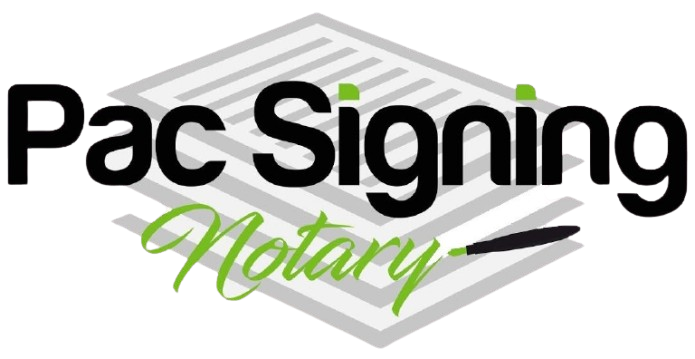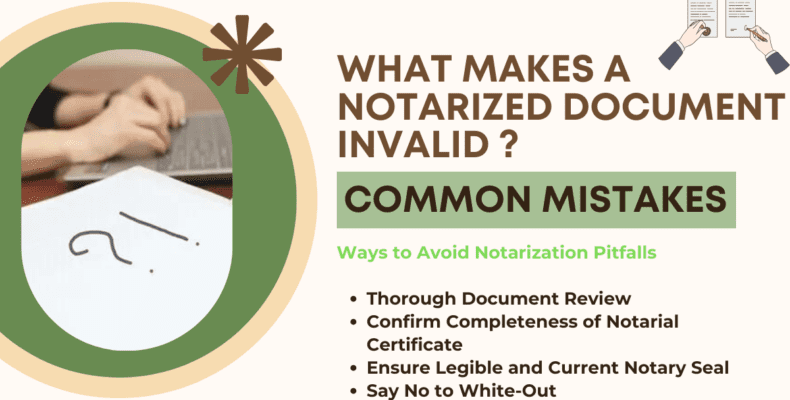Notarized documents are the bedrock of trust in legal and official transactions, providing an assurance of authenticity. However, the nightmare begins when a notarized document is deemed invalid. In this comprehensive guide, we explore the nuances surrounding invalid notarized documents, offering insights into potential pitfalls and providing actionable advice on avoiding them.
Importance of Notarized Documents
The Foundation of Legal Transactions
Notarized documents serve as indispensable instruments in legal proceedings, acting as a guarantee of the document’s legitimacy. The process of notarization establishes trust and credibility, assuring all parties involved that the document is genuine and the signatories are who they claim to be.
Establishing Trust and Credibility
Beyond the legal realm, notarization contributes to the establishment of trust and credibility in various official transactions. Whether it’s a real estate transaction, a will, or a power of attorney, the presence of a notary public adds a layer of assurance that the document is valid and legally binding.
Common Reasons for Invalid Notarized Documents
Incomplete Notarial Certificate
One of the primary reasons for the invalidation of notarized documents is an incomplete notarial certificate. This may include missing information about the venue or the signer’s name, rendering the notarized document unreliable in the eyes of the law.
Illegible/Expired Notary Seal
An illegible or expired notary seal can compromise the document’s validity. A clear and current notary seal is not just a formality; it’s a critical element for authentication.
Stamp Over Text
Stamping over text, intentionally or accidentally, can invalidate a notarized document. It’s crucial to exercise extreme caution when affixing the notary seal to prevent any overlap with the document’s content.
Using White-Out
Making corrections using white-out on a notarized document is a red flag. Such alterations can cast doubt on the document’s authenticity and lead to its invalidation. Precision and accuracy are paramount in the notarization process.
Empty Fields Notary Certificate
Leaving fields in the notary certificate blank can also result in invalidation. Each section of the notarial certificate serves a purpose, and failure to complete them accurately may lead to legal complications down the road.
Ways to Avoid Notarization Pitfalls
Avoiding the pitfalls associated with notarization requires a meticulous approach. Individuals should adhere to a comprehensive checklist before seeking notarization. Here are some key steps:
Thorough Document Review
Before presenting a document for notarization, conduct a thorough review. Ensure all necessary information is present, and the document is free from errors.
Confirm Completeness of Notarial Certificate
The notarial certificate must be complete and accurate. Verify that all relevant information, including the venue and signer’s details, is correctly filled out.
Ensure Legible and Current Notary Seal
The notary seal should be legible and current. A faded or expired seal can lead to unnecessary complications, potentially rendering the document invalid.
Exercise Caution When Stamping
When affixing the notary seal, exercise caution to avoid stamping over text. Any overlap can raise questions about the document’s integrity.
Say No to White-Out
White-out has no place in the notarization process. Any corrections should be made meticulously, and if a mistake occurs, consult with the notary on the best course of action.
Complete All Fields in the Notary Certificate
Leaving fields blank in the notary certificate is a common mistake. Ensure that every section of the notarial certificate is accurately filled out to avoid future issues.
Methods for Verifying Notarized Documents
Utilize Online Databases
To verify the validity of notarized documents, individuals can leverage online databases. Many jurisdictions offer searchable databases where users can confirm the status of a notary and the documents they have notarized.
Government Resources
Government resources, such as state notary divisions or county clerk offices, often provide avenues for verifying notarized documents. These resources can offer additional layers of confirmation beyond online databases.
Notary Verification Services
Specialized notary verification services are available to the public. These services may require a fee but can provide in-depth information about a notary’s standing and the validity of notarized documents.
FAQs about Invalid Notarized Documents
Addressing common questions sourced from Google’s People Also Ask section:
Can a notarized document be rejected?
Yes, a notarized document can be rejected if it fails to meet notarization requirements or contains errors. It’s crucial to adhere to the established standards to ensure the document’s acceptance.
What happens if a notary makes a mistake?
Notaries are human and can make mistakes. However, prompt rectification is crucial. Certain errors may lead to document invalidation, highlighting the importance of precision in the notarization process.
Is there a statute of limitations for challenging a notarized document?
Statutes of limitations regarding challenging notarized documents vary. Addressing concerns promptly is essential, as delays could impact the ability to challenge the document’s validity.
Conclusion:
By approaching notarization with diligence, individuals contribute to the preservation of trust and credibility in legal and official transactions. The journey from document creation to notarization is a critical one, and with this comprehensive guide, individuals can navigate it confidently, ensuring their documents stand the test of legality and time.

